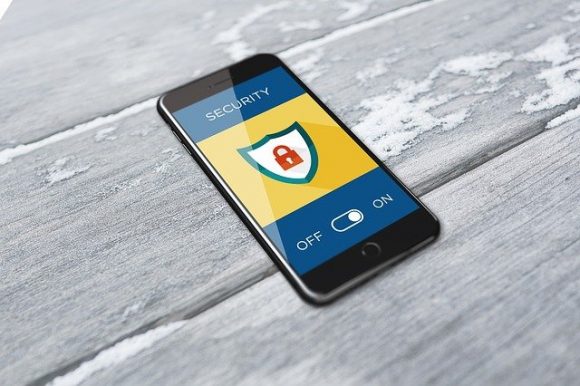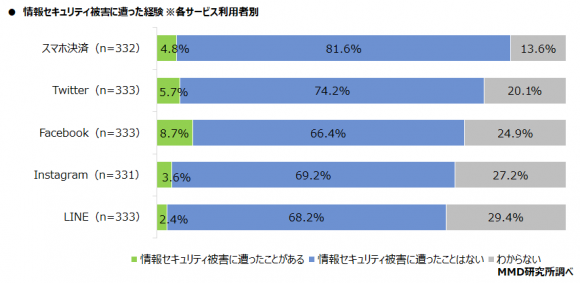
The MMD Research Institute has announced the results of the “Survey on Personal Information Security Literacy” conducted from October 28th to November 2nd, 2021.
In the preliminary survey, 6,647 men and women between the ages of 18 and 69 who own smartphones were surveyed, and in this survey, 332 smartphone payment users and 1,330 major SNS users were extracted from the preliminary survey.
87% of smartphone owners are implementing information security measures
When asked whether 6,647 men and women between the ages of 18 and 69 who own smartphones can use their smartphones with peace of mind in terms of information security, 24.3% said that they can use their smartphones with peace of mind. “I can use it with a little peace of mind” was 55.4%, and the total number of people who could use it with peace of mind was 79.7%.

In addition, 87% of people are implementing information security measures on their smartphones. The most common countermeasures were “Do not open suspicious emails and attachments” (62.0%), followed by “Do not browse suspicious sites” (55.3%) and “Smartphone screen lock settings” (51.9%). ..

The most recognized personal information security threat is “slandering, slander, hoax” on the Internet.
When asked if they were aware of each of the six items of information security threats, the result was that about 30 to 50% of them were aware of each item.
The most recognized item was “slandering, slander, and hoaxes on the Internet,” and 48.6% answered that they knew the existence and content of the threat.
On the other hand, the item with low awareness is “damage to smartphone users due to unauthorized application installation”, and 22.6% answered that they “do not know the existence or content of the threat at all”.

70.2% know the signs of being infected with the virus
When asked if they knew the signs that smartphones would appear when they were infected with the virus, 70.2% said they knew.

When we asked 4,655 people who answered “I know” what kind of signs they knew, the most common answer was “I received a payment request I don’t remember” at 56.8%, followed by “I remember it.” 48.1% answered “Send SMS or email without” and 46.3% answered “There is an app I don’t remember installing”.

More than 70% of smartphone payment and SNS users recognize the security threat of each service
It is used by 332 smartphone payment users and 1,330 SNS users (333 Twitter users, 333 Facebook users, 331 Instagram users, 333 LINE users) extracted from the preliminary survey. When asked about information security threats to services, more than 70% were aware that each service had information security threats.
The item with the highest awareness of information security threats in each service was “account hijacking due to unauthorized access.”





More than 60% of smartphone payment and SNS users implement security measures
Of the 332 smartphone payment users and 1,330 major SNS users, more than 60% answered that they are implementing information security measures for each service.
By service, 85.8% of respondents answered that they were “taking measures”, while 31.1% of “Instagram” answered that they were not taking measures. bottom.

The most common countermeasures were “Do not open links in emails and SNS carelessly” for smartphone payments, “Do not share login information with people” for Twitter, Facebook, and Instagram, and “Do not share login information with people” for LINE. Block receiving messages. “

About 80% of smartphone payment users and about 70% of each SNS user have no experience of information security damage.
About 80% of smartphone payment users and about 70% of each SNS user answered that they had no experience of information security damage.
Less than 10% of the respondents answered that they had “experienced damage” in common with each service, and the service with the highest damage experience rate was “Facebook” at 8.7%.

Source: MMD Laboratory
Photo:Pixabay-BiljaST
(kotobaya)
Source: iPhone Mania

